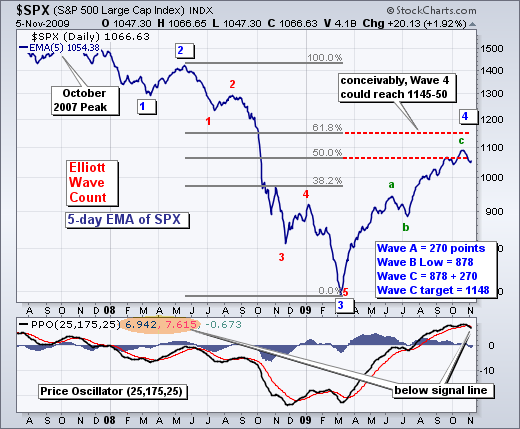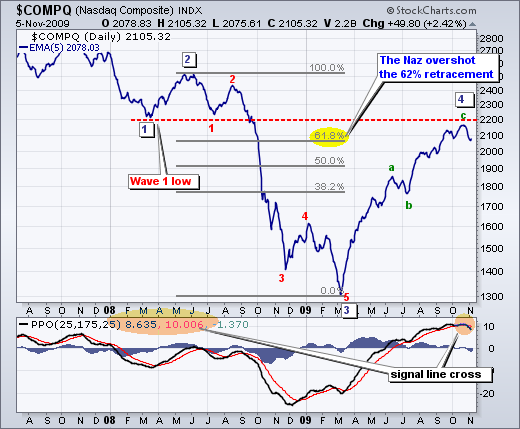The S&P 500 remains in a Wave 4 advance of a 5 Wave decline. I expect (think) Wave 4 will end in the 50-62% retracement zone and there are already signs of a reversal. Momentum is turning as the Percentage Price Oscillator (PPO) moved below its signal line for the first time since July.
Because I am using a daily chart, the PPO (25,175,25) corresponds with a weekly PPO (5,35,5). Waning momentum is a warning sign, but I have yet to see a full reversal with a break below the early October low. I am also waiting for the bulk of the medium-term evidence to turn bearish before considering the start of Wave 5. 900 would be the first target for a Wave 5 decline. Remember, 5th waves do not always break the low of Wave 3. 5th waves can be truncated. Elliott Wave analysis always stirs debate. As far as I can tell from the rules, Wave 4 can be any corrective pattern and cannot overlap any part of Wave 2. This means it can retrace a good portion of Wave 3, but cannot exceed the low of Wave 1.
Turning to the Nasdaq, we can see that Wave 4 retraced over 62% of Wave 3, but it has yet to exceed the low of Wave 1. This means Wave 3 has yet to overlap Wave 2. Close, but no cigar. The bigger wave 3 is, the bigger the Wave 4 retracement rally will be. It just cannot exceed the low of Wave 1. This means the Nasdaq would need to break 2200 to invalidate this wave count. In contrast to the S&P 500, the Nasdaq broke below its early October low and the PPO formed a negative divergence. In addition, the PPO moved below its signal line and momentum is also waning. There is an argument that Wave 5 has started for the Nasdaq. As with the S&P 500, I would mark the first downside target around 1800, which corresponds with Wave B.








